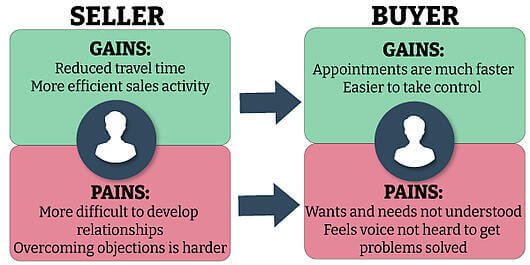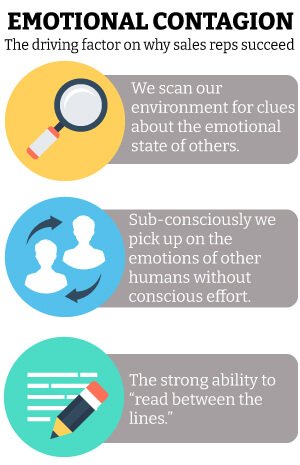Did you know virtual selling has been in the making for 94-years with the first video call dating back to 1927? Talk about it taking a while for technology to catch on! Learn more about the interesting start to video calls below.
The video call has come a long way to become a regular part of consumer mainstream technology over the last few years. But, over the past year, the COVID-19 pandemic pushed the corporate world much faster into using video conference calls as a virtual selling platform and for day-to-day customer interaction. This idea brings to mind the old phrase, “It’s nice to put a face with the name.” There is a lot of psychology that goes into how a relationship develops because of the connection in seeing and “knowing” someone’s face and being able to read and react to their body language. There is a certain rapport and trust that is built. Today, the video call is a differentiator attributed to sales success.
Now that sellers and buyers have embraced the benefits of virtual interaction, there is no going back. Sure, buyers and sellers will begin to meet again in the office, but a full return to in-person selling seems highly unlikely. Owners and Sales Leaders committed to their growth plans need to teach and equip their sales teams to perform at a high level in the virtual-driven business world.
Why is it that buyers continually express that sellers are falling short in how they engage in the virtual selling landscape? It’s due to buyers and sellers experiencing different benefits and challenges from this type of engagement. The internet is alive with online content on this topic, but the primary obstacle sellers face is failing to understand how virtual selling translates in to the three most important areas of sales:
- CONNECT – Gaining the buyer’s attention
- EARN – Developing trust
- SHARE – Presenting solutions
Sellers must understand how different their impact is to their buyer and transform their customer engagement and sales processes from direct human selling. Learning the gaps of virtual selling will create the path to bridging them. Sellers that effectively make the pivot will enjoy many more sales opportunities and create a larger pipeline with a faster sales cycle.

 Successful virtual selling begins with learning to make connections without direct contact. This idea is directly related to Emotional Contagion, which is the phenomenon of having one person’s emotions and related behaviors directly trigger similar emotions and behaviors in other people.
Successful virtual selling begins with learning to make connections without direct contact. This idea is directly related to Emotional Contagion, which is the phenomenon of having one person’s emotions and related behaviors directly trigger similar emotions and behaviors in other people.
Back in the 90’s a group of scientists measured emotional contagion in the most effective salespeople nationwide. *This is because 50% of the information in a conversation is non-verbal. This means that we lose a large amount of data intake when we shift from in-person meetings (in 3-D) to video conferencing (in 2-D) due to a dramatically smaller view of the customer and their surroundings. This challenge grows tenfold when the salesperson utilizes solely phone communication (1-D).
Although it plays a part, sales success is not because of great products or services. It is the result of an expert understanding of emotions and the ability to navigate them. When a salesperson is face-to-face with a buyer, it is easier for them to understand objection cues, minimize communication issues, ask for the next step, and gain commitment to close the sale.
*Emotional contagion hypothesis, proposed by Hatfield, Cacioppo, and Rapson (1994)
Here are ten practical tips to help Owners and Sales Leaders guide their salespeople to more success in the 2-D virtual selling world:
Five counter-productive virtual selling behaviors to avoid:
- Jumping on a call on time but failing to check your audio and video in advance.
- Wearing clothes that you would not normally wear during a face-to-face meeting.
- Having poor internet connection that regularly freezes.
- Failing to prepare in advance to learn the buyer’s interests and needs.
- Talking too much and not allowing the customer to consistently engage.
Five things that positively influence video calls:
- Allow ample time between virtual meetings to give yourself the time to mentally prepare.
- Prep for the meeting by finding ways to connect with buyers to gain and maintain their attention.
- Learn to manage the sales process with fewer cues (less Emotional Contagion).
- Continually gain verbal validation from the buyer before moving onto the next topic.
- Prevent the buyer from taking control and cutting the sales process short.
While the virtual selling world is new, it’s going to stay around quite a while longer and maybe become a permanent part of the sales process. Properly guiding your salespeople through this transformation will ensure that virtual selling is an effective way to grow your sales and business for years to come.







Leave A Comment